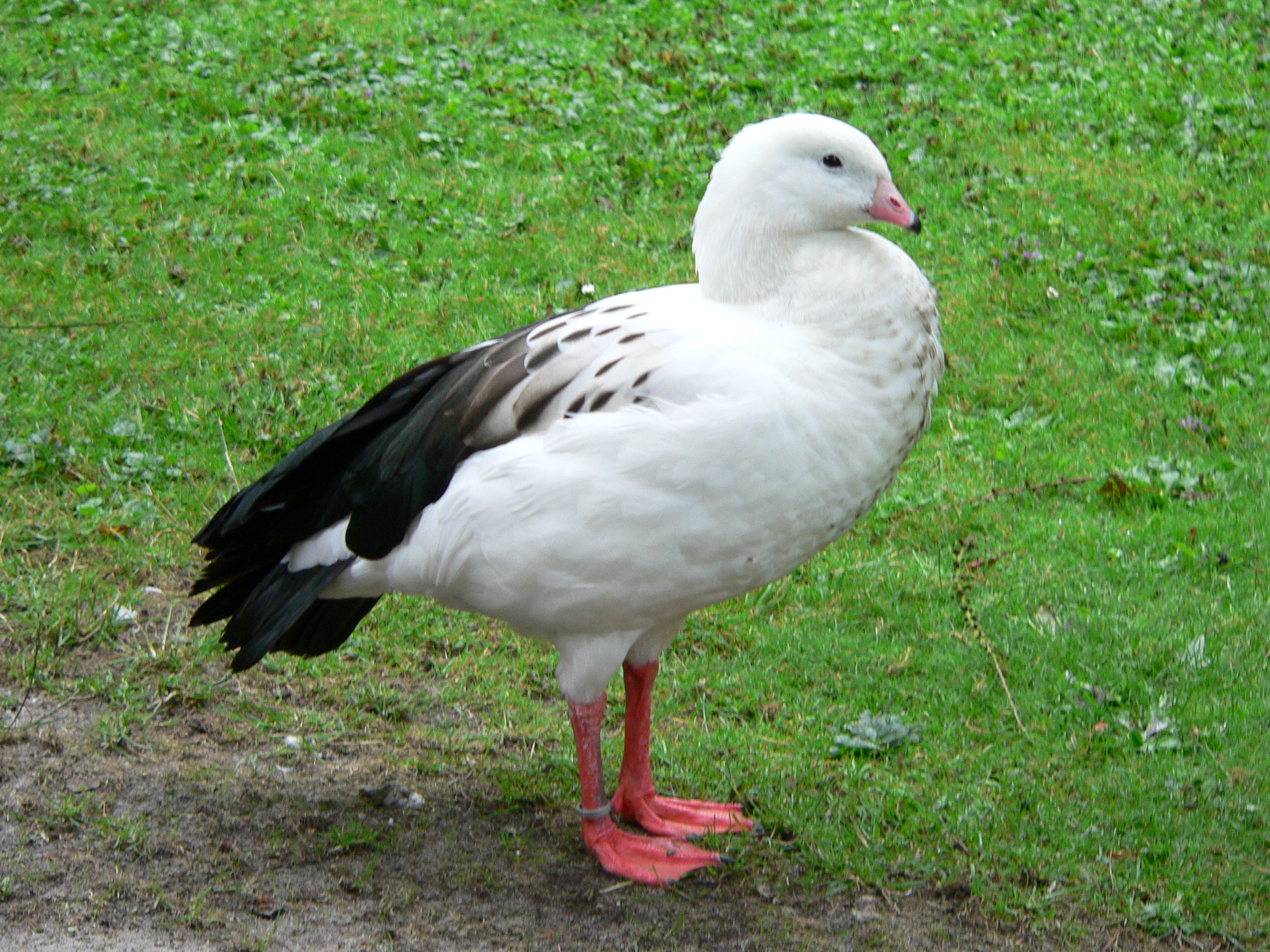
Andean goose(Chloephaga melanoptera)
Phylum —chordata
Class — aves
Order — anseriformes
Family — anatidae
Genus – chloephaga
Appearance
This is a bulky goose with white plumage overall, except on wings and tail. Adult has white head, neck, underparts, back, rump and most parts of wings. The wings show glossy black primary flight feathers, great coverts and tertials. Tail is black too. Scapulars have black and white scaled effect. The short bill is pinkish-red with black nail. Eyes are dark brown surrounded by narrow pink eye-ring. Legs and webbed feet are pinkish-red. Both sexes have similar plumage, but male is larger than female.
The juvenile is duller than adults, with head and neck washed pale grey, and duller and greyer wings and tail.
Length – 70-80 cm, weight – 2700-3600 g.
Habitat
The Andean goose is sedentary in the Andes from C Peru to C Argentina. This species occurs up to 3000 meters of elevation, sometimes more, up to 4700 meters.
Behavior
The species is usually found in pairs or family groups, grazing near water at high elevation. The non-breeding birds remain in flocks all year round, whereas the family group separate before the next nesting period.
During the breeding season, males are aggressive and strongly defend the young and the territory, using ritual postures with open wings and stretched neck, sometimes accompanied by loud calls. Females only defend the nest-site.
The Andean goose is not a very good swimmer. It goes to the water if threatened and with the chicks very soon after hatching.
Diet
The Andean goose is a vegetarian species, feeding on grasses, sedges and aquatic plants such as Chara, Lilaeopsis, Myriophyllum and Nostoc.
Reproduction
Breeding season starts in November, (November-January). The Andean goose can be solitary nester or form loose groups. The nest is a shallow depression in the ground, close to the water or not. The cup is made with plant materials. These geese may also use rock crevices for nesting.
Female lays 5-10 eggs, and incubates during about one month, while the male remains in the surrounding of the site. At hatching, chicks are covered in white down, and show three blackish bands on the upperparts. As soon as they hatch, the whole family reaches the water where they remain for several weeks, about three months. The young fledge at 12 weeks after hatching, and can breed at three years.
Both mates remain together all the life, or for several years. They are monogamous.
In captivity
Average lifespan in captivity – 10-15 years.
When keeping this species, it is necessary to have a pool with water or a natural reservoir. The optimal ratio of the reservoir area to pasture is 20% water and 80% pasture. The optimal area of the entire enclosure is 200 sq. m. The optimal height of grass in the pasture is 7.5 cm.
It is necessary to build a poultry house on the territory of the aviary. Geese will be able to hide in it from the cold and wind in the cold season. You need constantly to update the litter in the poultry house. For such bedding, you will need about 40 kg of dry straw (hay). It is important to replace the wet bedding in time. Otherwise, the plumage quickly becomes dirty and does not protect the bird from the cold.
The poultry house should be made of wood or mud. Humidity and drafts are not allowed in it. Proper maintenance of geese is the key to their health.
During the construction of a poultry house, it is very important to take into account that at least one square meter of floor space should be allocated for one adult goose. With a higher density, the room will quickly become polluted, and the air in it will stagnate. This can cause diseases of wild geese and significantly reduce their productivity. Once a year, you need to whitewash the walls with freshly slaked lime.
Geese eat natural grasses. You can add to herbs: wheat grains, waterfowl pellets, and chicken feed. If there is not enough grass on the pasture, it is necessary to bring mown fresh grass. In winter, you can feed sliced vegetables, especially good to give cabbage and salads. Not averse to eating worms, insects and shellfish sometimes.
 Russian
Russian
 English
English
























